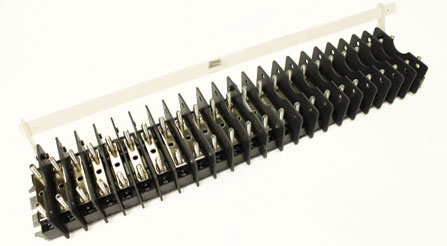mike33
Member
- Location
- Irvine, CA
I have approximately 60 #12 THHN wires in a junction box that need to be spliced. I always use wire nuts, but I would like to give it a cleaner look.
Has anyone ever used terminal strips for something like this?
Are there any code issues?
http://www.idealindustries.com/prodDetail.do?prodId=89-212&div=0&l1=terminal_blocks_strips
Has anyone ever used terminal strips for something like this?
Are there any code issues?
http://www.idealindustries.com/prodDetail.do?prodId=89-212&div=0&l1=terminal_blocks_strips






